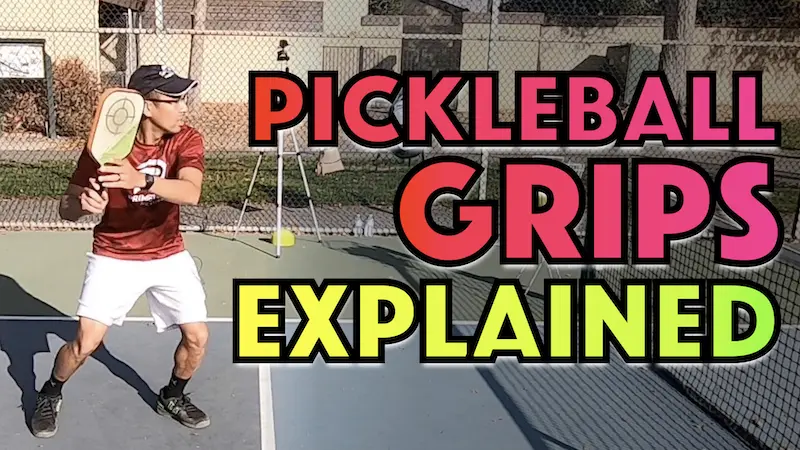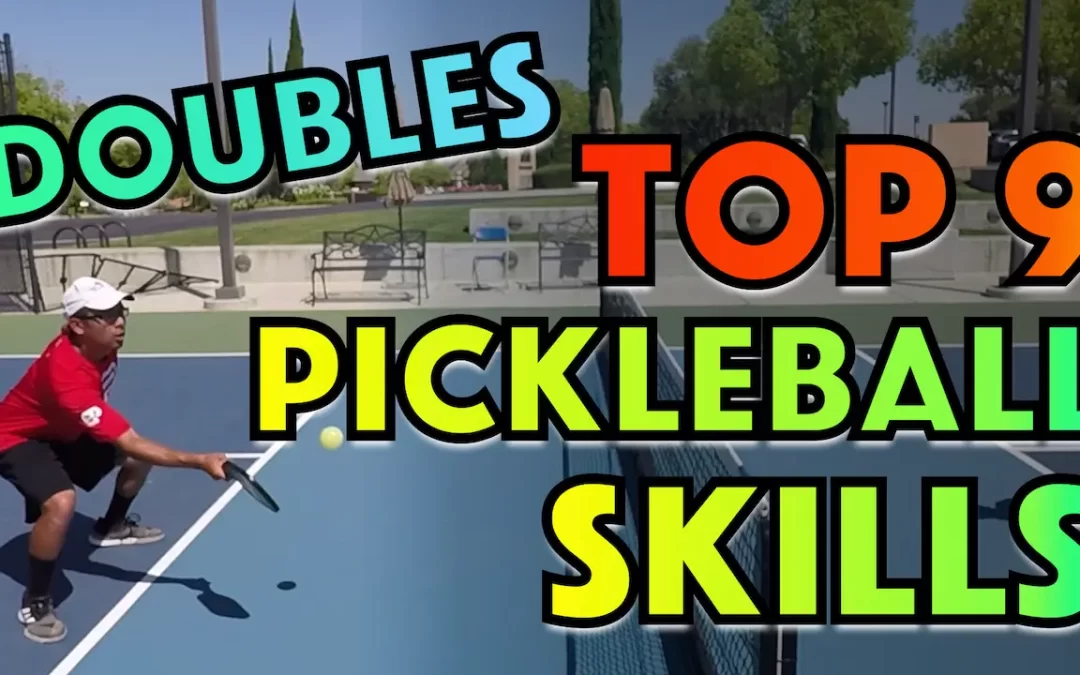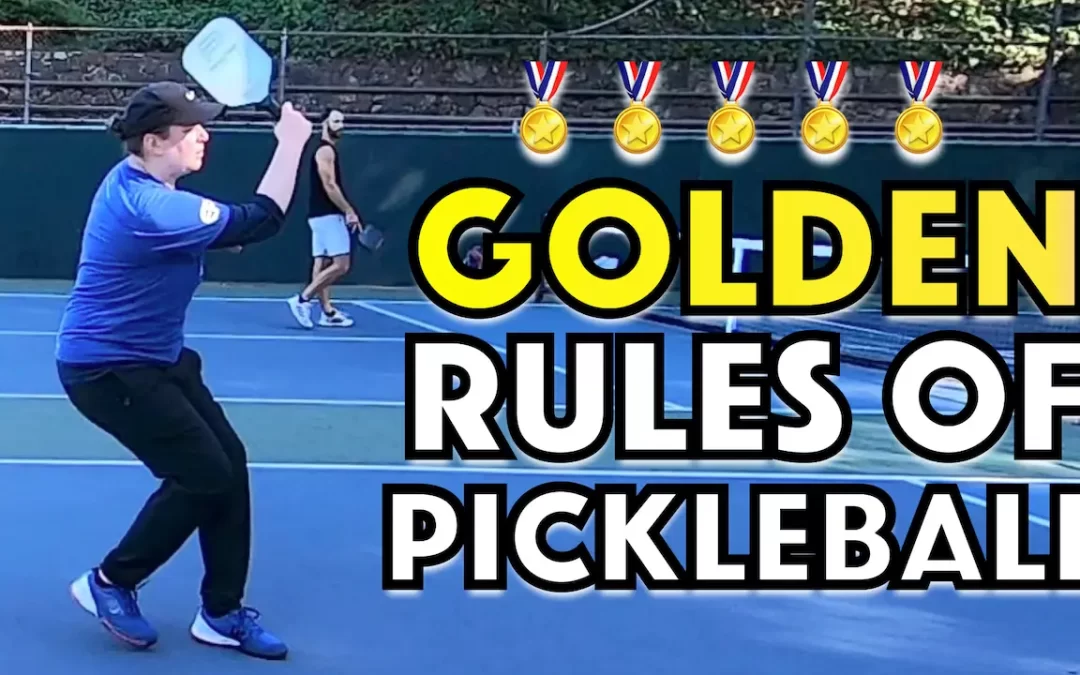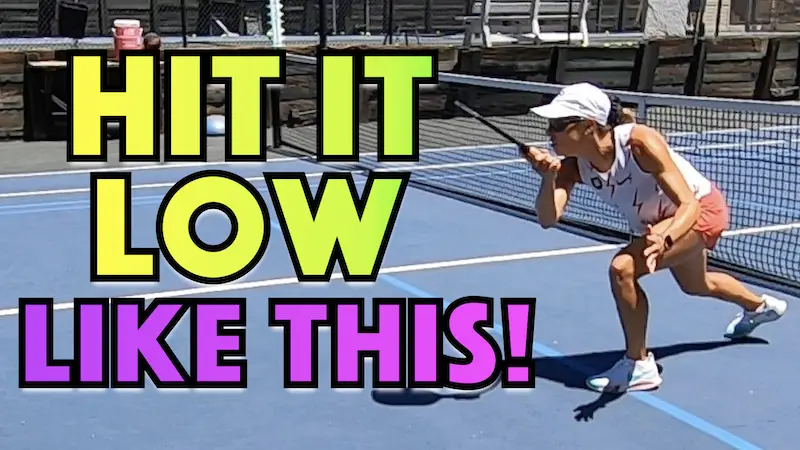The way we’re taught to dink when we first learn pickleball is a good start. We are taught to hit flat (push) dinks that land in the kitchen.
It’s good to get really consistent at dinking in this way and vital to have a solid foundation to dinking.
However, you’ll start to realize as you progress up the ranks of pickleball that a flat dink like that just isn’t going to cut it anymore. No matter how consistent you are with those flat dinks they often tend to bounce too high which puts little to no pressure on your opponent.
Dinks like that with no spin do not stay very low and and can be attacked more and more even if the bounce stays below the height of the net.
Advanced players are able to effectively attack from below the height of the net and that is going to be even more true as time goes on and they get better and better at it.
The solution is to put some kind of action on your dinks.
In this blog and in the video at the top of this post, we’ll talk about all the different ways you can put action on your dinks and make you opponents feel the pressure of these aggressive dinks that set you up for the win..
We’re going to talk about dead dinks and why you need to stay away from them.
When you’re starting out in the game of pickleball you’re trying to be as consistent as possible and you want to make your dinks land into the non-volley zone so that their unattackable.
But, these dinks don’t have a lot of spin and they’re just they’re landing pretty high where they can be easily attacked. This is what is called a dead dink.
It’s a dink with no action and there’s no very variables in the dinks. I’m hitting the same flat dink over and over and over again.
One good thing about this dink is that it’s very consistent.
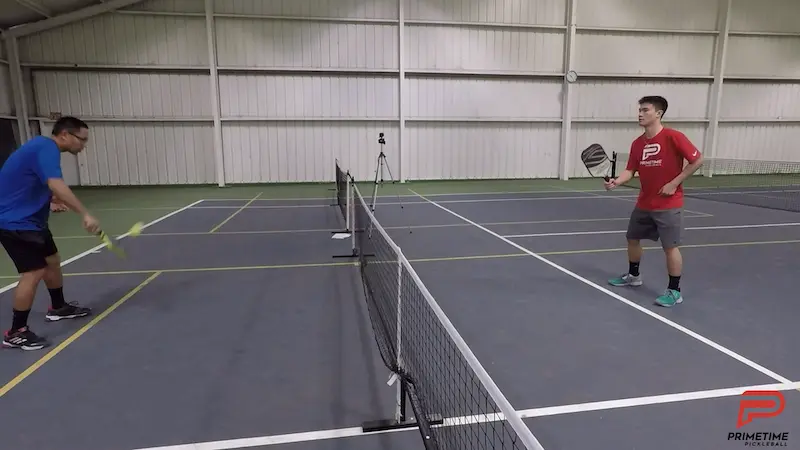
When we’re getting into the dink rally it’s very easy to get this ball back over. We could do a thousand of these without messing up.
But, the con to it is that it’s going to be easily attacked.
If I’m hitting dinks like this my opponent could roll that shot over or they could speed it up because the dinks are going right to them every time. This is what we want to avoid.
These flat dinks are landing into the non-volley zone for the most part but they’re very predictable.
These are three things that you can do to not hit dead dinks.
Point #1 – Vary The Depth: Mix It Up Hitting Deep And Short
The first thing I’m going to talk about is where the location is that you’re hitting these dinks.
One thing that I really want to focus on is mixing up the depth in the dinks.
I might hit it closer to the net and I might hit it towards my opponents feet.
This way it’s going to make my opponent decide if they’re going to take it out of the air or if they’re going to let it bounce.
In this example I’m hitting straight to my opponent but I’m changing my depth of the ball. I’m hitting some closer to his feet and I’m also hitting some short.
Already this kind of dinking is going to be much better. It’s making your opponent think whether they need to volley or they need to let that ball drop and they’re gonna hit it off the bounce.
Point #2 – Move Opponent Side To Side
Number two is I want to move my opponent side-to-side. While I’m experimenting with the depth I’m also moving them side to side so they have to hit their forehand and their backhand.
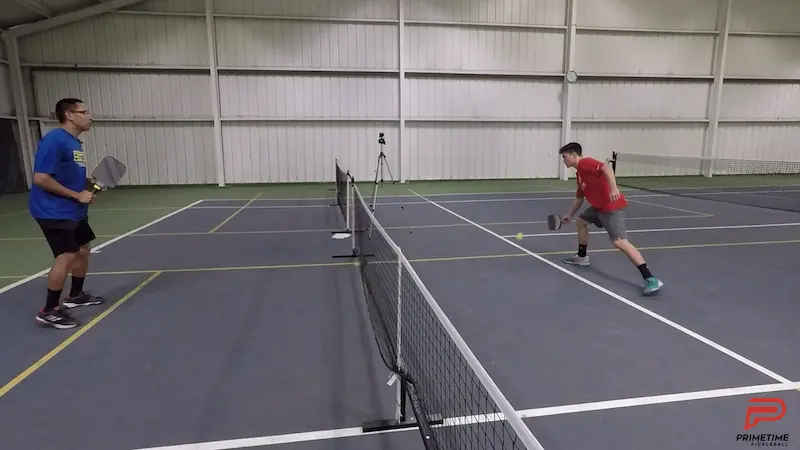
I might start and hit on to the backhand then switch it up to the forehand and then send one to their body for example.
So now I have them on the move and since I’m not hitting to the same place every time they don’t know where I’m going to go.
If you’re playing a team and they’re just constantly attacking you, you’re probably just hitting dead dinks and hitting the same dink over and over.
So, putting those two together is a good idea. I’m really experimenting with my depth (I‘m going to hit it shallow and deep towards the feet or the body) and I’m moving them side to side.
Sometimes I’m hitting short sometimes I’m hitting long.
Point #3 Add Spin: Topsin, Underspin and/or Sidespin
The third thing to avoid dead dinks is to add some spin.
This is usually more for a cross-court dink.
When you’re dinking straight across, down the line, you’re mainly just lifting the ball as you don’t really have much space to add a spin.
Beginners are usually just lifting the ball and coming under the ball and you can see that these balls don’t have that much spin.
If you’re more of an advanced player you want to start to learn to add a little bit of spin on your shots. It’s going to be troublesome for your opponent and they’re going to have a harder time with your balls.
It’s a lot easier to put spin on the ball when you’re hitting cross-court as there a larger court area between your contact point and your opponent’s contact point.
As I mentioned, the three areas I like to aim for are to the forehand, the backhand and towards the body.
I’m also thinking about depth right? So, remember I’m hitting towards the feet and I’m hitting some short all while putting different spins on the ball.
By doing this it’s going to make it harder for your opponent to attack your dink.
If your opponent moves you around with their dinks it’s really important that you always get back up to that line. Retreat back to your ready position.
Those are the three things that can really help you avoid hitting these dead dinks and getting easily attacked.
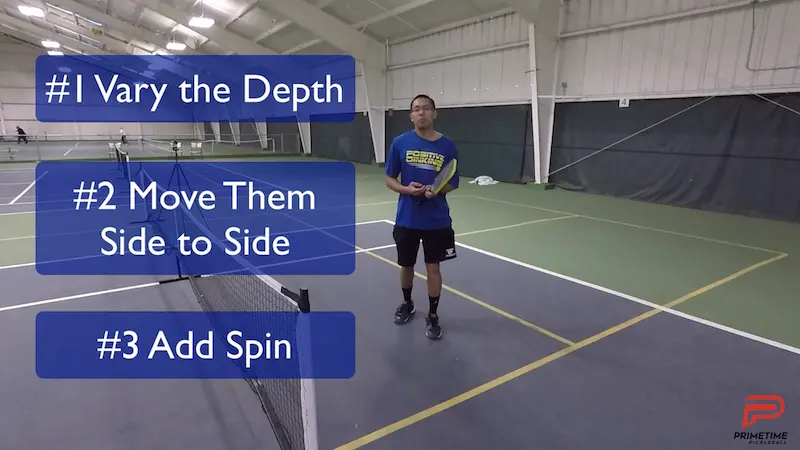
So, if you’re in a game and you’re dinking well with your opponent and they keep speeding up the ball these dead dinks be the problem with your dinking.
Go out there to drill and practice! Remember to always have fun!


